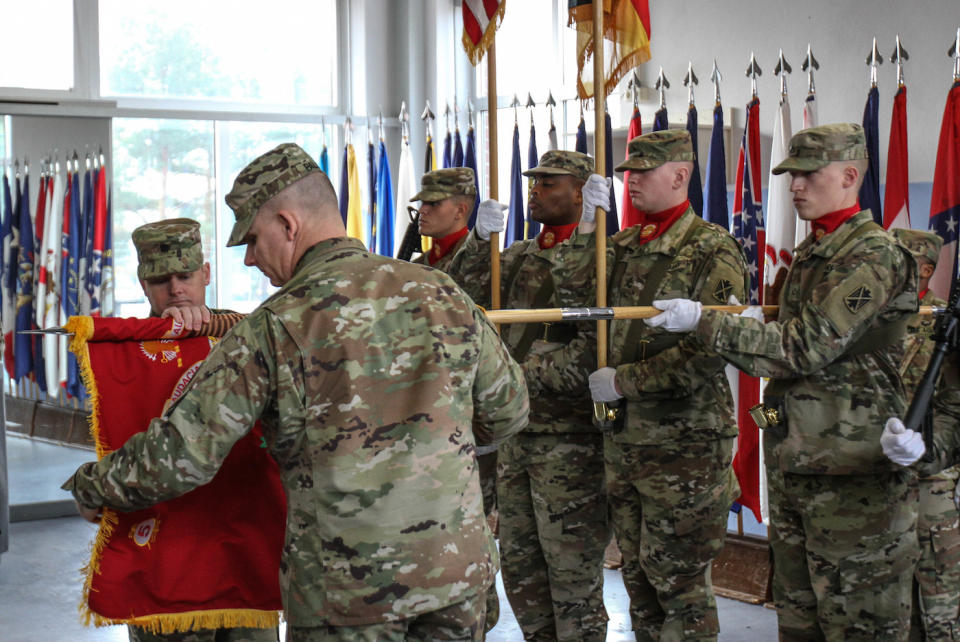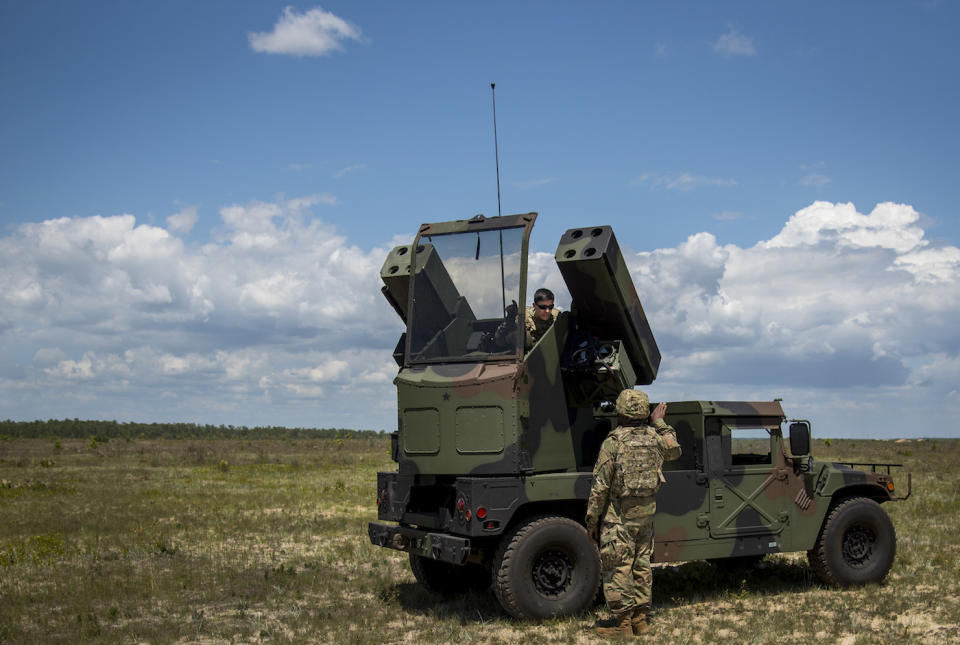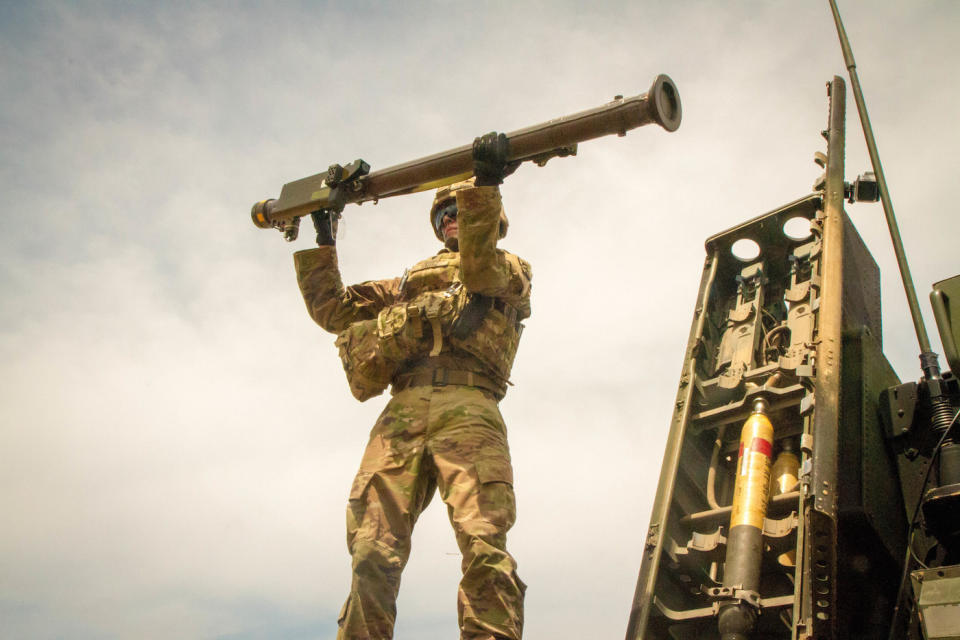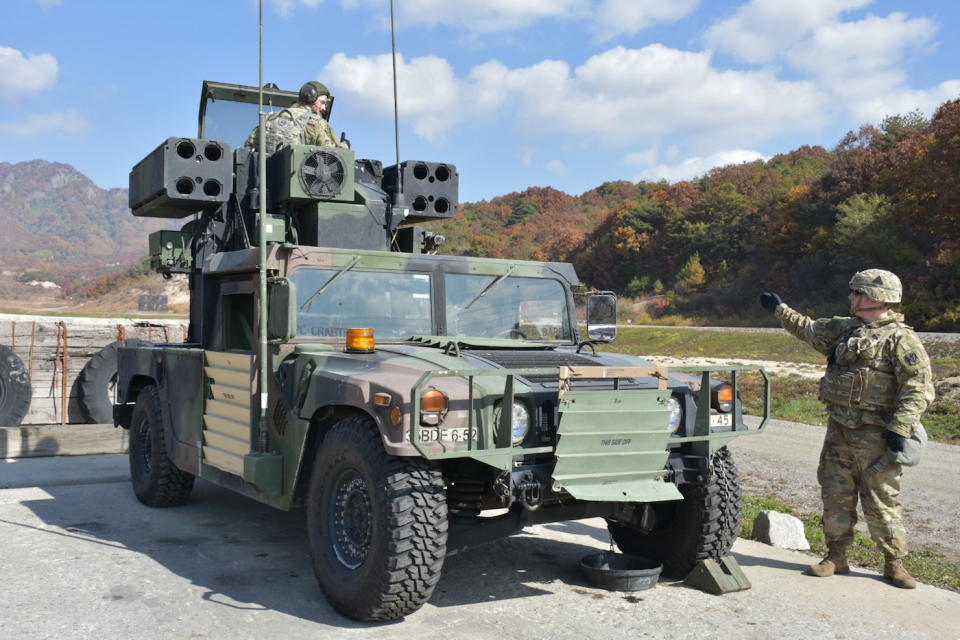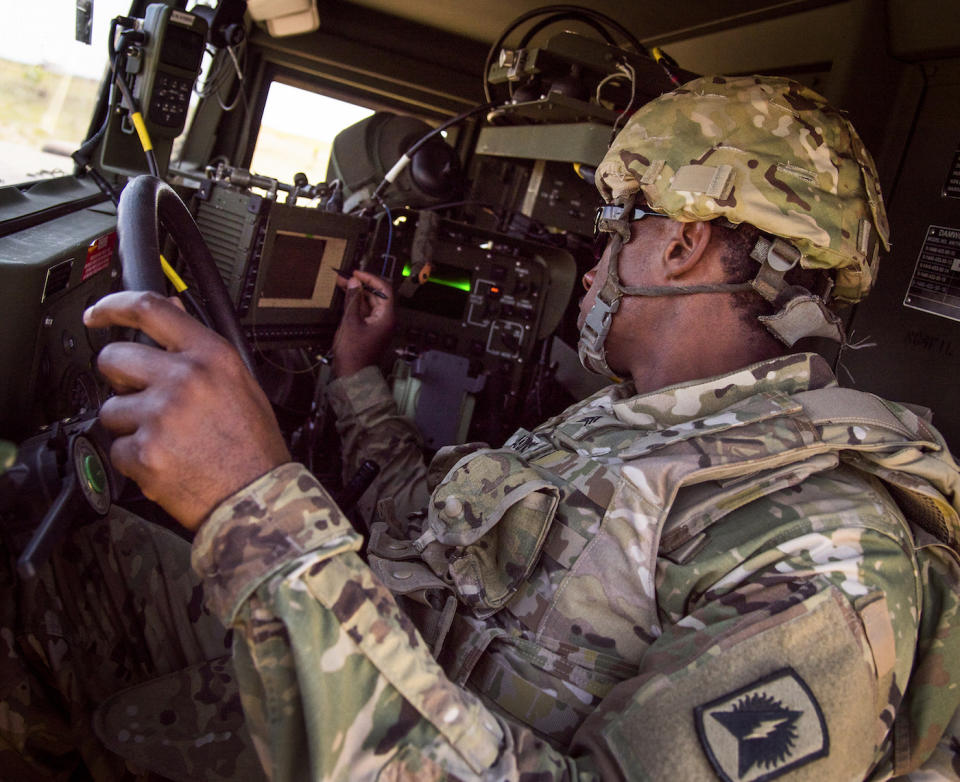The US Army is gearing up for a potential fight with Russia, and it just put a crucial defensive weapon back in Europe permanently
The Pentagon has been focusing on preparations for a potential clash with a peer, or near-peer, adversary like Russia.
Amid heightened tensions with Russia, the US Army in Europe has made a number of changes to how it operates.
The most recent change was the return of an air-defence unit stationed on the continent permanently.
The US Army in Europe has made a number of changes in recent months as part of a broader effort by the Pentagon to prepare for a potential fight against an adversary with advanced military capabilities, like Russia or China.
The latest move came on November 28, when the Army activated the 5th Battalion, 4th Air Defence Artillery Regiment, in a ceremony at Shipton Barracks in Ansbach, near the city of Nuremberg in southern Germany.
The battalion has a long history, serving in artillery and antiaircraft artillery roles in the War of 1812, the Civil War, World War II, and the Vietnam War. It was deactivated in the late 1990s, after the US military withdrew from the Cold War.
Its return brings new and important short-range-air-defence, or SHORAD, capabilities, according to Col. David Shank, the head of 10th Army Air and Missile Defence Command, of which the new unit is part.
"Not only is this a great day for United States Army Europe and the growth of lethal capability here. It is a tremendous step forward for the Air Defence Enterprise," Shank said at the ceremony.
The battalion will be composed of five battery-level units equipped with FIM-92 Stinger missiles, according to Stars and Stripes.
Three of those batteries will be certified before the end of the summer, Shank said, adding that battalion personnel would also "build and sustain a strong Army family-support program, and become the subject-matter experts in Europe for short-range-air-defence to not just the Army, but our allies."
Those troops "will have a hard road in from of them," Shank said.
Air Defence Artillery units were for a long time embedded in Army divisions, but the service started divesting itself of those units in the early 2000s, as military planners believed the Air Force could maintain air superiority and mitigate threats posed by enemy aircraft.
But in 2016, after finding a gap in its SHORAD capabilities, the Army started trying to address the shortfall.
In January, for the first time in 15 years, the US Army in Europe began training with Stinger missiles, a light antiaircraft weapon that can be fired from shoulder- and vehicle-mounted launchers.
Lightweight, short-range antiaircraft missiles are mainly meant to defend against ground-attack aircraft, especially helicopters, that target infantry and armoured vehicles. Unmanned aerial vehicles - used by both sides in the conflict between Russia and Ukraine - are also a source concern.
US Army Europe has been relying on Avengers defence systems and Stinger missiles from Army National Guard units rotating through the continent as part of Operation Atlantic Resolve, which began in 2014 as a way to reassure allies in Europe of the US commitment to their defence.
Guard units rotating through Europe have been training with the Stinger for months, but the 5th Battalion, 4th Air Defence Artillery Regiment, will be the only one stationed in Europe that fields the Avenger, a short-range-air-defence system that can be mounted on a Humvee and fires Stinger missiles.
The Army has also been pulling Avenger systems that had been mothballed in order to supply active units until a new weapon system is available, according to Defence News, which said earlier this year that Army Materiel Command was overhauling Avengers that had been sitting in a Pennsylvania field waiting to be scrapped.
The Army has also fast-tracked its Interim Short Range Air Defence (IM-SHORAD) program to provide air- and missile-defence for Stryker and Armoured Brigade Combat Teams in Europe.
The Army plans to develop IM-SHORAD systems around the Stryker, equipping the vehicle with an unmanned turret developed by defence firm Leonardo DRS. The system includes Stinger and Hellfire missiles and an automatic 30 mm cannon, as well as the M230 chain gun and a 7.62 mm coaxial machine gun. It will also be equipped with electronic-warfare and radar systems.
Final prototypes of that package are expected in the last quarter of 2019, according to Defence News, with the Army aiming to have the first battery by the fourth quarter of 2020.
The activation of the 5th Battalion, 4th Air Defence Artillery Regiment, is part of a broader troop increase the Army announced earlier this year, saying that the increase in forces stationed in Europe permanently would come from activating new units rather than relocating them from elsewhere.
The new units would bring 1,500 soldiers and their families back to Europe. (Some 300,000 US troops were stationed on the continent during the Cold War, but that number has dwindled to about 30,000 now.)
Read more:
The US military's largest base outside the US just got its biggest ammo delivery in 20 years
In addition to the short-range-air-defence battalion and supporting units at Ansbach, the new units will include a field-artillery brigade headquarters and two multiple-launch-rocket-system battalions and supporting units in Grafenwoehr Training Area, and other supporting units at Hohenfels Training Area and the garrison in Baumholder.
The activations were scheduled to begin this year and should be finished by September 2020, the Army said in a statement.
"The addition of these forces increases US Army readiness in Europe and ensures we are better able to respond to any crisis," the Army said.

 Yahoo Finance
Yahoo Finance 

